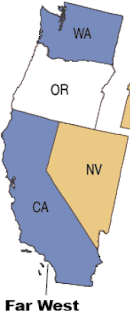A facility, geographic area, or population group where individuals have subpar access to mental health care services can be designated by the Health Resources and Services Administration (HRSA) as a health professional shortage area (HPSA). A healthcare shortage designation from the HRSA is based on population size relative to the number of providers who service that population. In the case of mental health care, that designation can be based on either (a) the size of the HPSA population relative to the number of psychiatrists that serve the community or (b) the size of the HPSA population relative to the combined number of psychiatrists and certain other mental health practitioners (clinical social workers, clinical psychologists, etc.) who service the HPSA. According to the HRSA, most mental health care shortage designations are currently based on the number of psychiatrists that serve the HPSA setting or community. As of December 31, 2022, the HRSA reports that more than 158.4 million Americans lived in mental health HPSAs.
As of December 31, 2022, the five-state Rocky Mountain region was home to more than 9.6 million residents who lived in mental health care shortage areas. The HRSA estimates that Rocky Mountain region HPSAs would need 372 additional mental health care providers to eliminate the shortage in the region. As such, HPSAs in the Rocky Mountain region accounted for about 6.1% of the U.S. population who lived in mental health care shortage areas and approximately 4.7% of the national deficit of mental health care providers. A closer examination of HRSA data reveals the following state-level details about the Rocky Mountain region's mental health care shortage:

|
The Rocky Mountain Region's Mental Health Care Shortage |
| State |
(1) HPSAs |
(2) Population |
(3) Shortage |
| CO |
73 |
2,831,663 |
114 |
| ID |
72 |
2,209,556 |
82 |
| MT |
122 |
986,301 |
70 |
| UT |
50 |
2,921,191 |
78 |
| WY |
26 |
699,712 |
28 |
|
|
|
|
| Region |
343 |
9,648,423 |
372 |
|
|
|
|
| U.S. |
6,599 |
158,413,168 |
7,957 |
|
|
|
|
| % of U.S. |
5.2% |
6.1% |
4.7% |
(1) Designated Geographic, Population Group, and Facility HPSAs with a mental health care shortage
(2) Population of designated HPSAs
(3) Mental Health Care practitioners needed to remove HPSA Designation
Source: Designated HPSA Quarterly Summary, 12/31/22 (HRSA)






